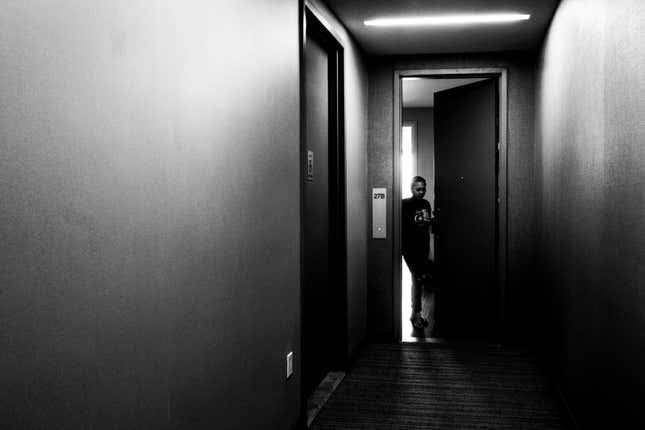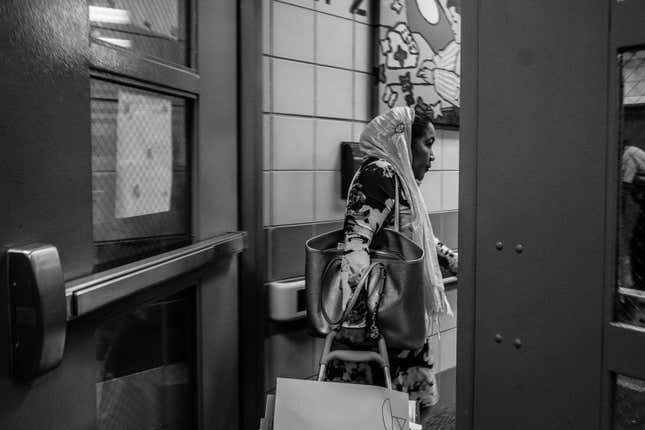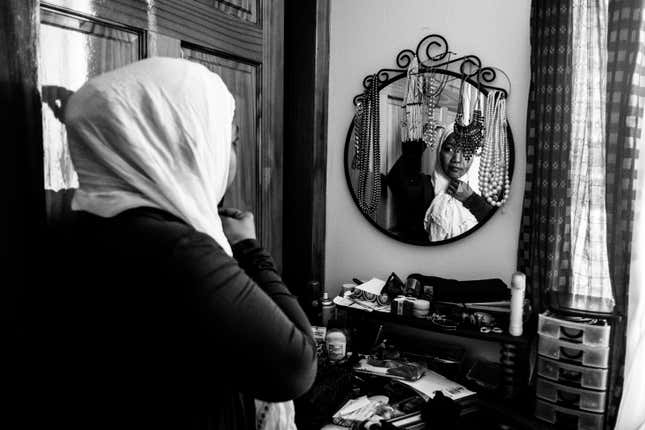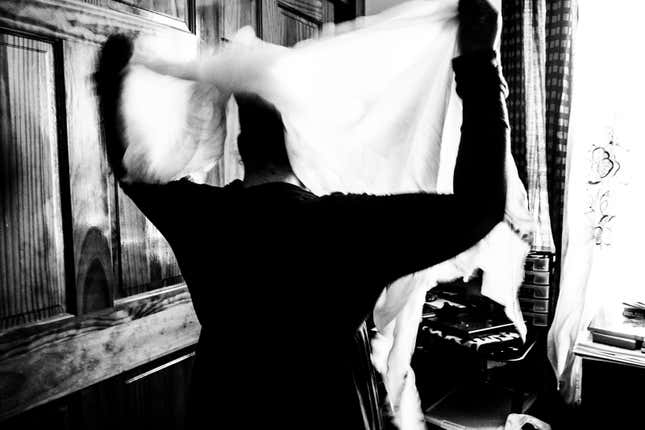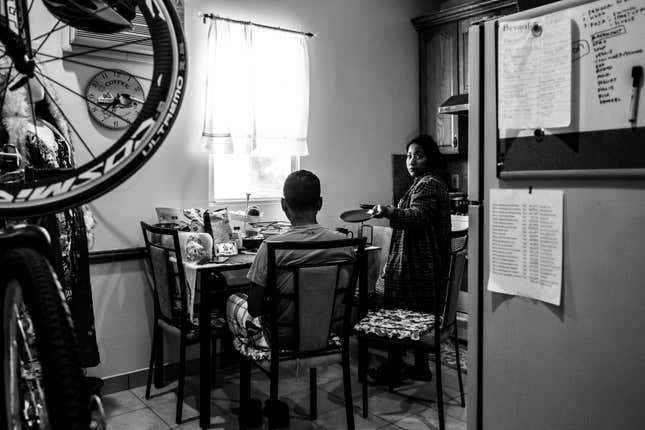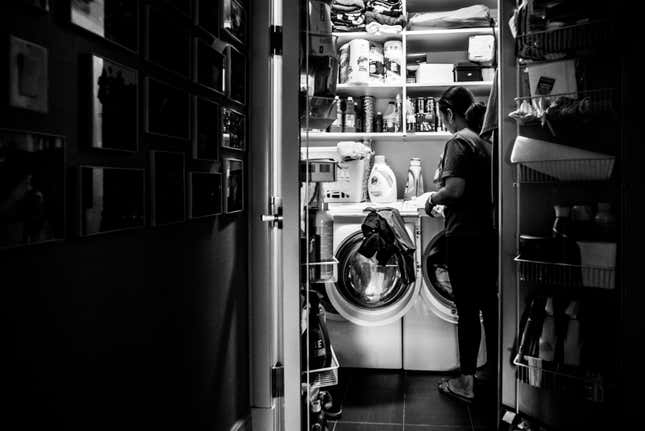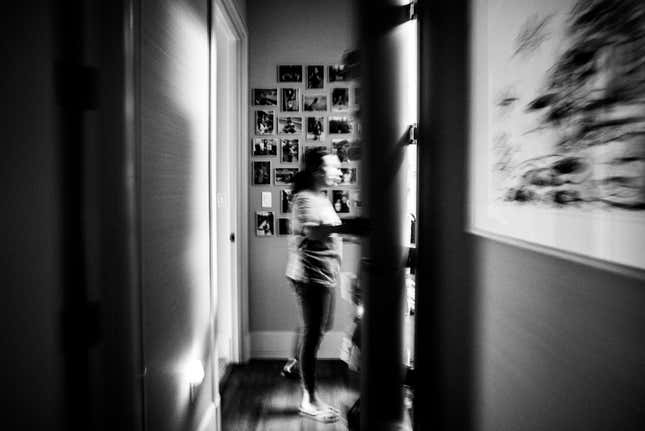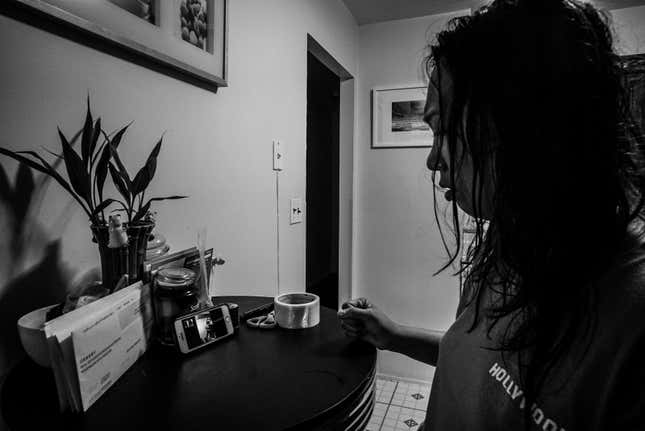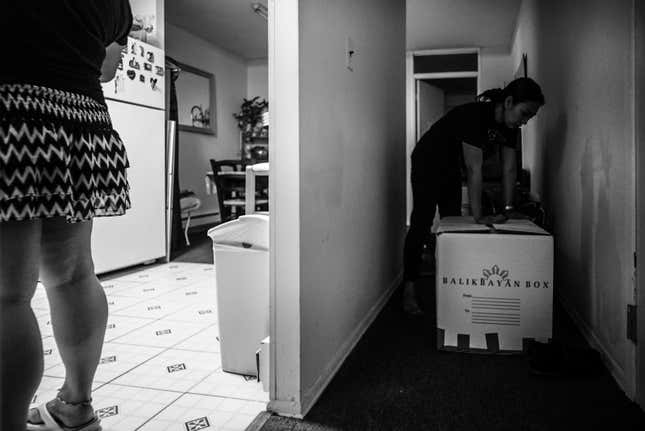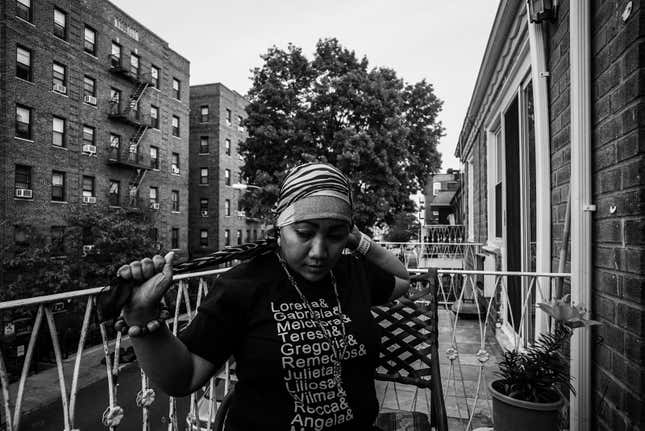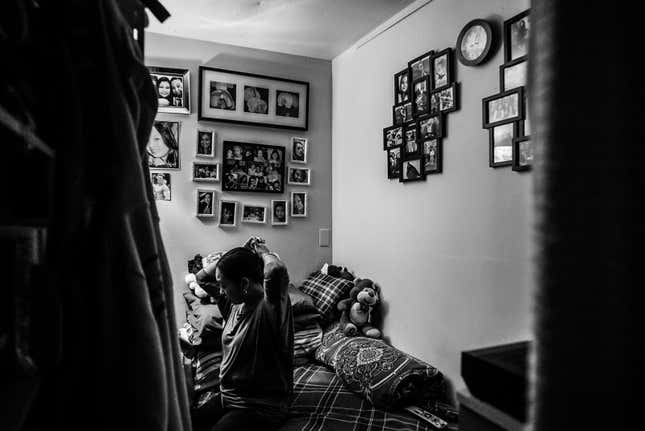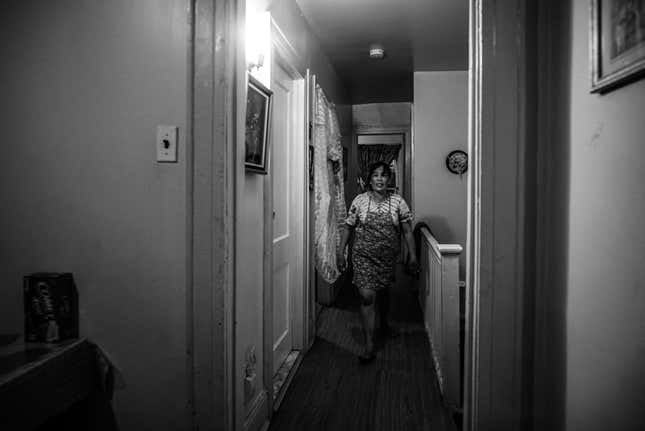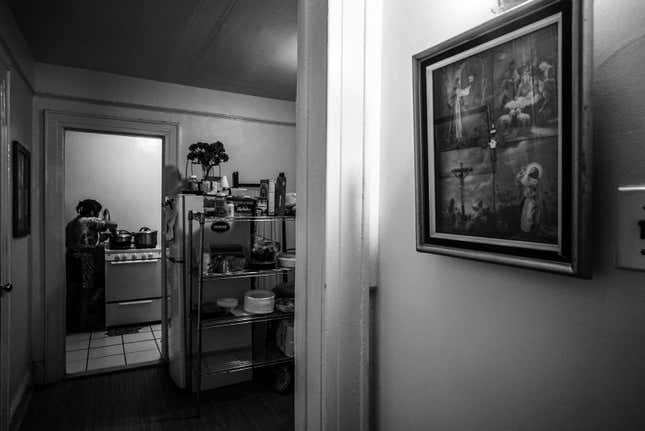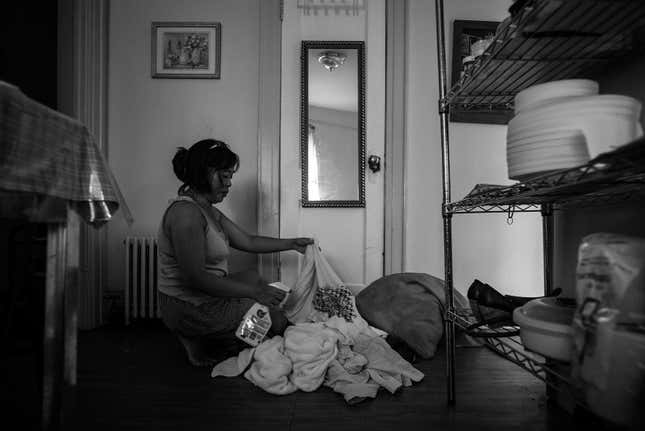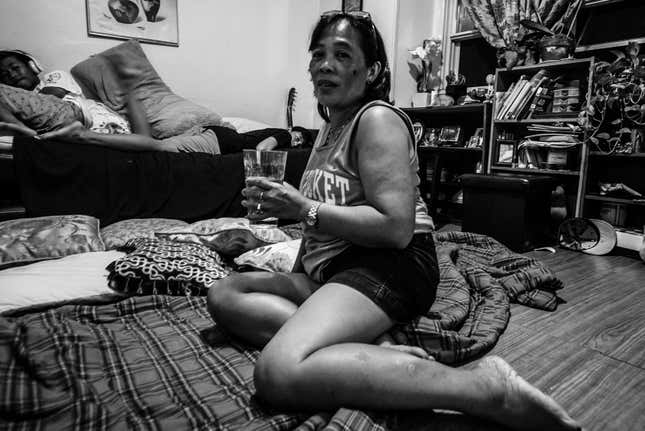Xyza Cruz Bacani was a domestic worker for nearly ten years, before the world recognized her as photographer. Now, in an ongoing project to document human trafficking and overseas workers, the 29-year-old prodigy reveals the dark reality of female domestic workers in the United States.
Shot with the help of the Damayan Migrant Workers Association, a non-profit for Filipino domestic workers’ rights in New York and New Jersey, Xyza’s photos portray women who were professionals in the Philippines, before emigrating to become nannies and housekeepers in the Upper East Side and other wealthy areas of New York City.
“These women have been away from their families for a long time,” Xyza tells Quartz. “All they wanted was to have a better life for their families and the toll of family separation really hits them.”
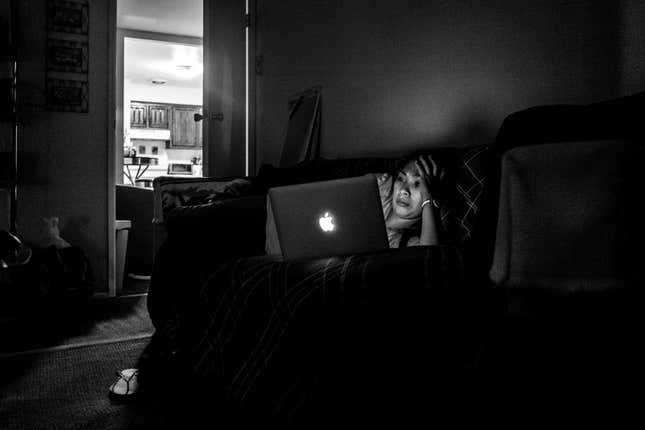
Daisy Benin is one of Xyza’s subjects. “Daisy is doing everything for her children,” says Xyza. “She talks to them everyday via Skype, assists on their homework. She tries to be a mom even though she is millions of miles away.”
An estimated 23% of domestic workers in the United States are paid below the state minimum wage, according to advocacy group National Domestic Workers Alliance. Nearly all domestic workers in the US are women, and about half are immigrants. Xyza explains that many of the women she photographed and followed expressed disappointment that the United States they encountered was not what they were expecting:
Many Filipinos want to move to the US, but what they see on ads and television is not the reality of life of migrants. During the time I spent with these women, we had many intimate conversations. They told me that the advertising they saw at home created a false hope that once you’re in America, you can earn lots of money and build a better life.
While some of Xyza’s subjects have been forced into labor or abandoned by traffickers, she says she hopes her photos will undo stereotypes of victimhood for domestic workers, and notes that there is no one way for a domestic worker to look or act. ”When I show these images to other people, they make comments like, ‘How can victims be using computers?!'” she laughs.
